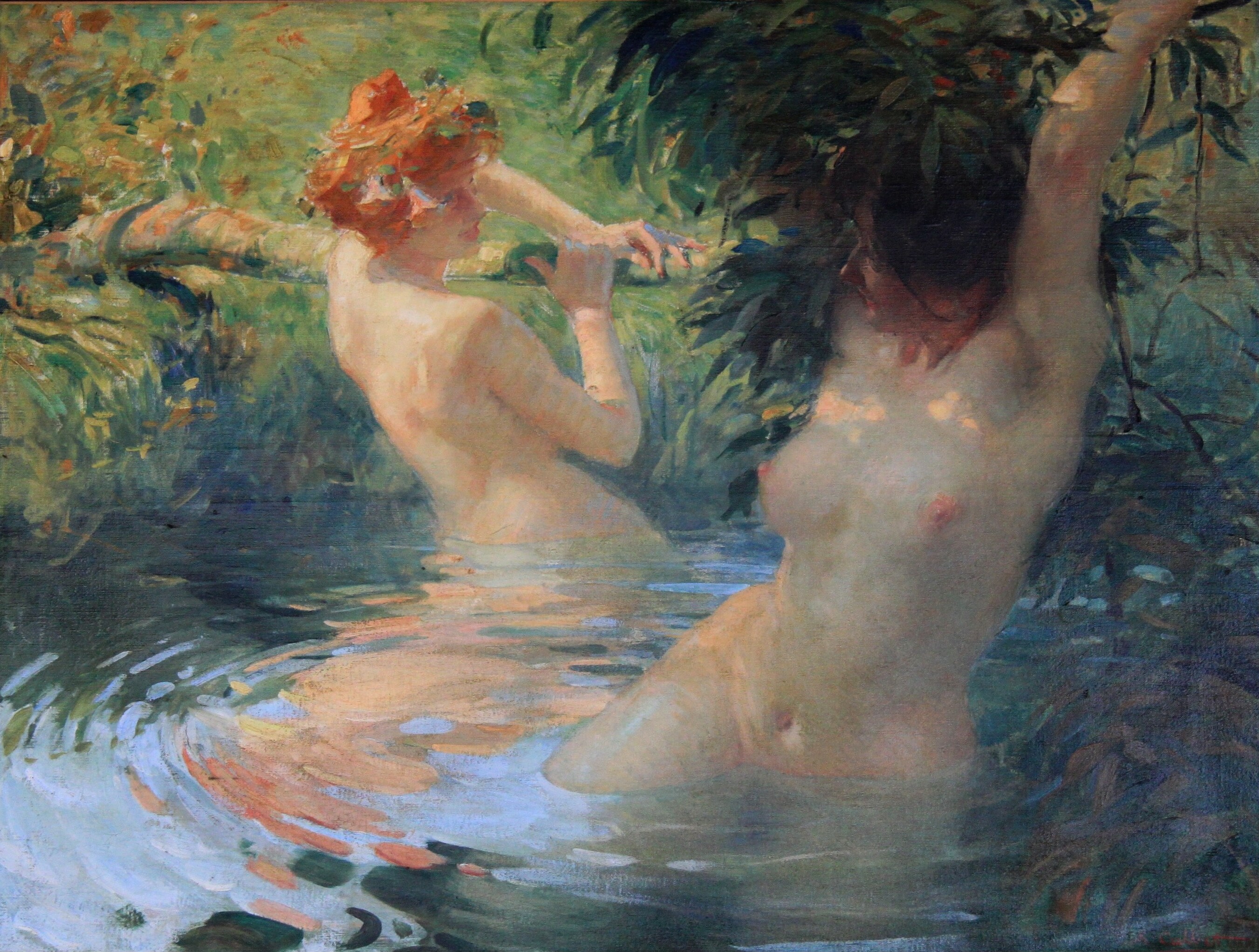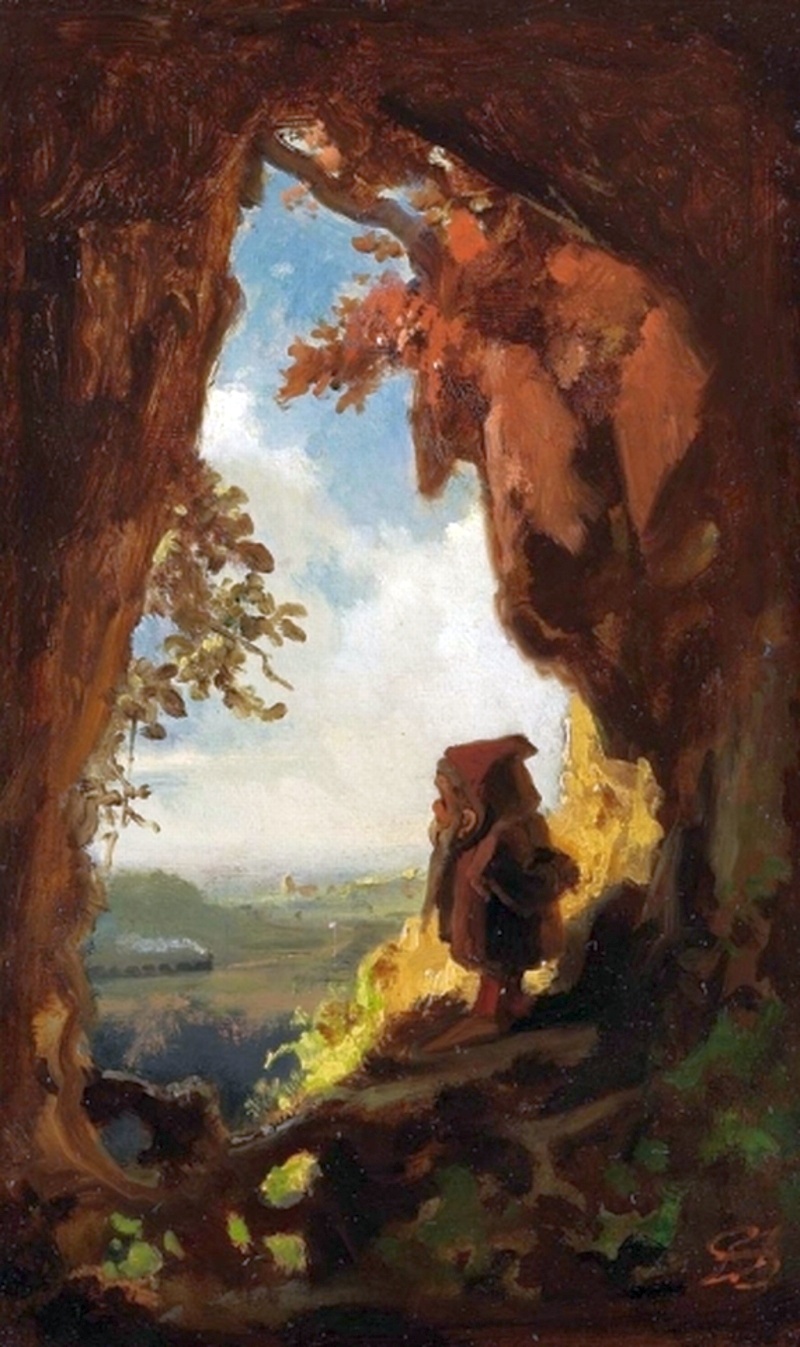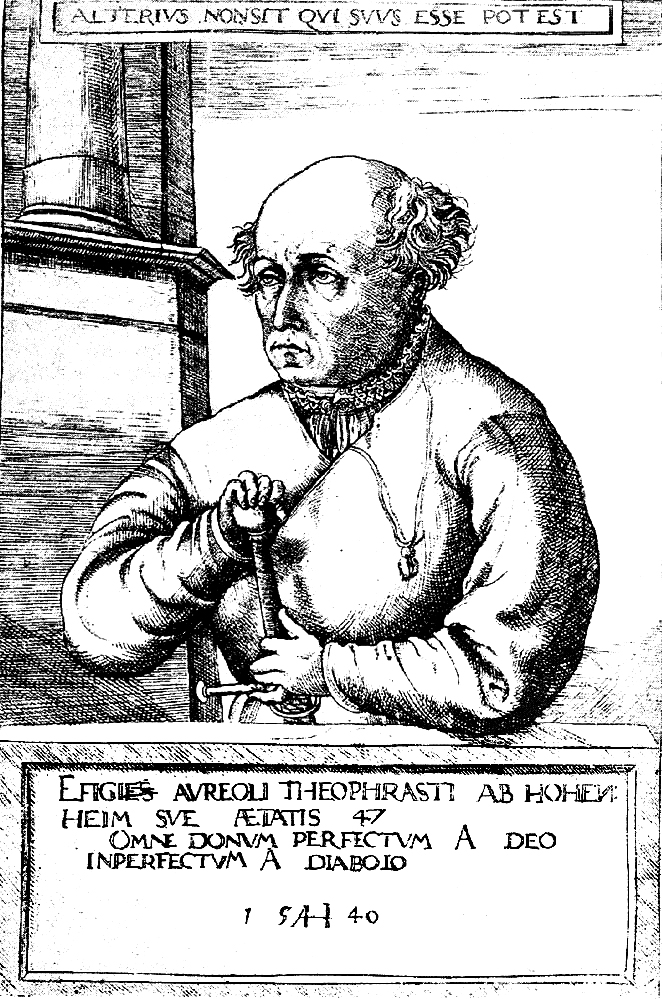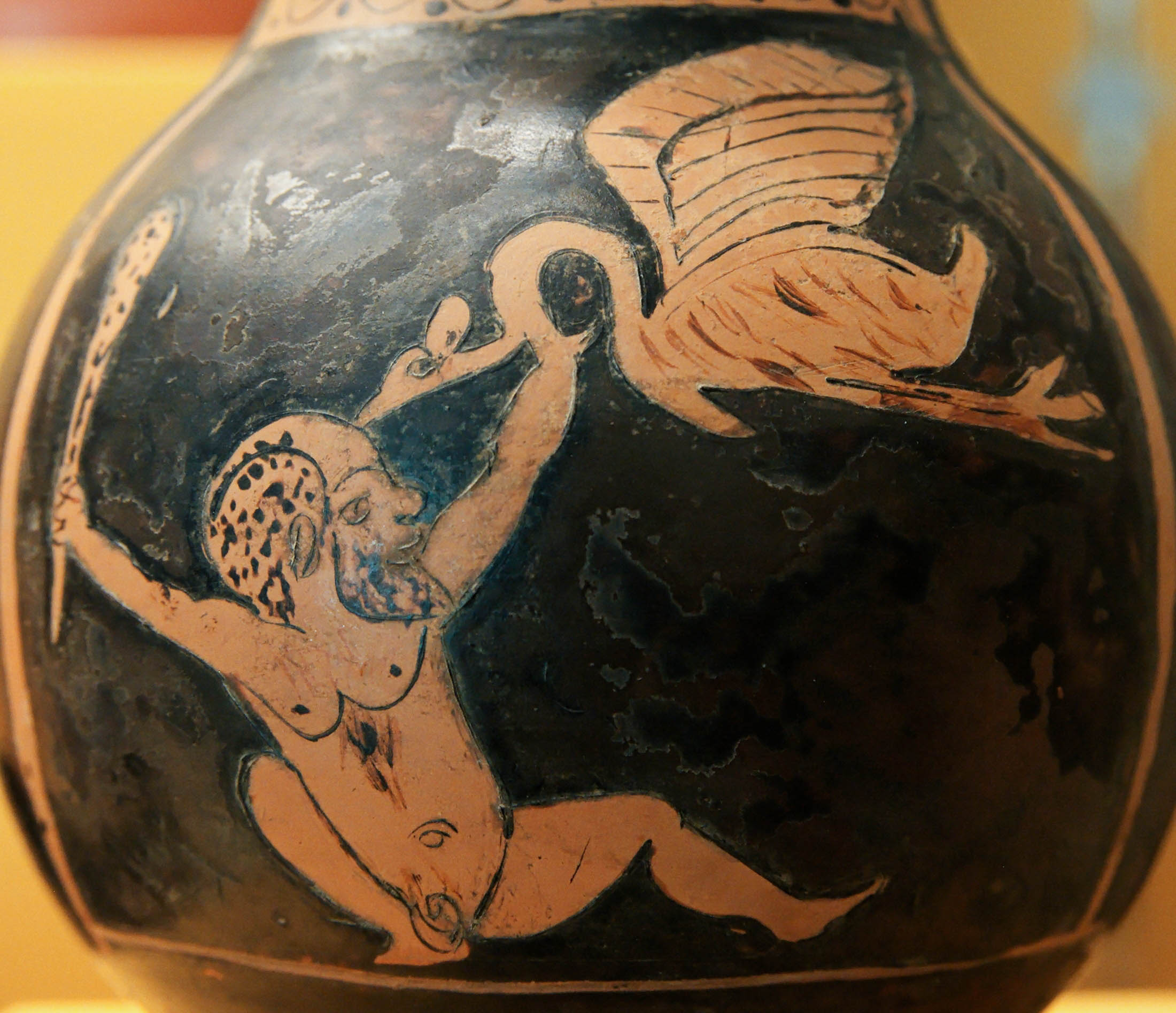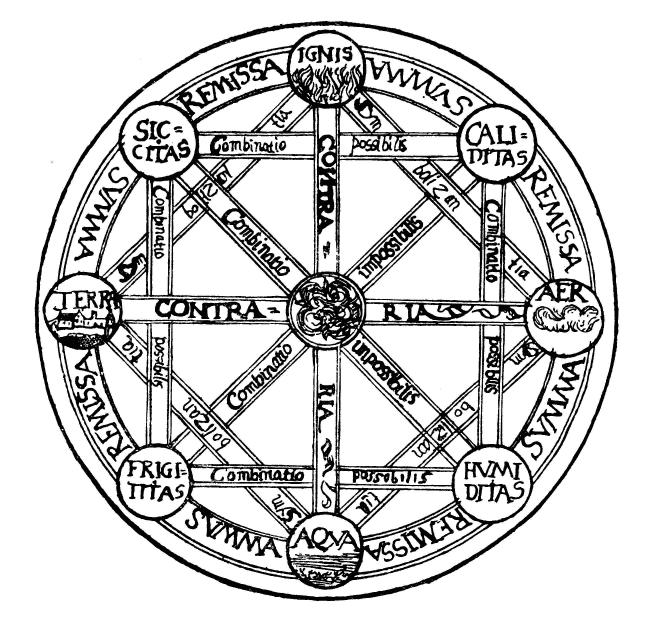|
Elemental
An elemental is a mythic supernatural being that is described in occult and alchemy, alchemical works from around the time of the European Renaissance, and particularly elaborated in the 16th century works of Paracelsus. According to Paracelsus and his subsequent followers, there are four categories of elementals, which are gnomes, undine (alchemy), undines, sylphs, and salamanders in folklore and legend, salamanders. These correspond to the four Empedoclean elements of antiquity: earth (classical element), earth, water (classical element), water, air (classical element), air, and fire (classical element), fire, respectively. Terms employed for beings associated with alchemical elements vary by source and gloss. History The Paracelsian concept of elementals draws from several much older traditions in mythology and religion. Common threads can be found in folklore, animism, and anthropomorphism. Examples of creatures such as the Pygmy (Greek mythology), Pygmy were taken from Gr ... [...More Info...] [...Related Items...] OR: [Wikipedia] [Google] [Baidu] |
Undine Rising From The Waters, Front
Undines (; also ondines) are a category of elemental beings associated with water, stemming from the alchemical writings of Paracelsus. Later writers developed the undine into a water nymph in its own right, and it continues to live in modern literature and art through such adaptations as Danish Hans Christian Andersen's 1837 "The Little Mermaid" and the 1811 novella '' Undine'' by Friedrich de la Motte Fouqué. Etymology The term ''Undine'' first appears in the alchemical writings of Paracelsus, a Renaissance alchemist and physician. It derives from the Latin word ''unda'', meaning "wave", and first appears in Paracelsus' ''A Book on Nymphs, Sylphs, Pygmies, and Salamanders, and on the Other Spirits'', published posthumously in 1566. ''Ondine'' is an alternative spelling, and has become a female given name. Elementals Paracelsus believed that each of the four classical elementsearth, water, air and fireis inhabited by different categories of elemental spirits, liminal cr ... [...More Info...] [...Related Items...] OR: [Wikipedia] [Google] [Baidu] |
Sylph
A sylph (also called sylphid) is an air spirit stemming from the 16th-century works of Paracelsus, who describes sylphs as (invisible) beings of the air, his elementals of air. A significant number of subsequent literary and occult works have been inspired by Paracelsus's concept: Robert Alfred Vaughan noted that "the wild but poetical fantasies" of Paracelsus had probably exercised a larger influence over his age and the subsequent one than is generally supposed, particularly on the Rosicrucians, but that through the 18th century they had become reduced to "machinery for the playwright" and "opera figurantes with wings of gauze and spangles". Etymology "Sylph" is possibly a blend of from Latin '' sylvestris'' and '' nympha'', ''sylvestris'' being a common synonym for sylph in Paracelsus. Anthon and Trollope note a similar usage in the ''Aeneid'', where ''silvestris'' is taken as an elliptical form of ''nympha silvestris'' ("forest nymph"). Jacob Grimm uses this phrase as a glos ... [...More Info...] [...Related Items...] OR: [Wikipedia] [Google] [Baidu] |
Salamander (legendary Creature)
The salamander is an amphibian of the order Urodela which once, like many real creatures, often was suppositiously ascribed fantastic and sometimes occult qualities by pre-modern authors, as in the allegorical descriptions of animals in medieval bestiaries. The legendary salamander is often depicted as a typical salamander in shape, with a lizard-like form, but is usually ascribed an affinity with fire, sometimes specifically elemental fire. European lore This legendary creature embodies the fantastic qualities that ancient and medieval commentators ascribed to the natural salamander. Many of these qualities are rooted in verifiable traits of the natural creature but often exaggerated. A large body of legend, mythology, and symbolism has developed around this creature over the centuries. Carl Linnaeus in the 10th edition of ''Systema Naturae'' of 1758 established the scientific description of the salamander and noted the chief characteristics described by the ancients: the ... [...More Info...] [...Related Items...] OR: [Wikipedia] [Google] [Baidu] |
Gnome
A gnome () is a mythological creature and diminutive spirit in Renaissance magic and alchemy, introduced by Paracelsus in the 16th century and widely adopted by authors, including those of modern fantasy literature. They are typically depicted as small humanoids who live underground. Gnome characteristics are reinterpreted to suit various storytellers and artists. Paracelsus's gnome is recognized to have derived from the German miners' legend about or , the "metallurgical or mineralogical demon", according to Georg Agricola (1530), also called (literal Latinization of ''Bergmännlein'', "mountain manikin") by Agriocola in a later work (1549), and described by other names such as (sing. ; Latinization of German ). Agricola recorded that, according to the legends of that profession, these mining spirits acted as miming and laughing pranksters who sometimes threw pebbles at miners, but could also reward them by depositing a rich vein of silver ore. Paracelsus also called ... [...More Info...] [...Related Items...] OR: [Wikipedia] [Google] [Baidu] |
A Book On Nymphs, Sylphs, Pygmies, And Salamanders, And On The Other Spirits
''A Book on Nymphs, Sylphs, Pygmies, and Salamanders, and on the Other Spirits'' () is a treatise by the Swiss lay theologian and philosopher Paracelsus, published posthumously in 1566. It is about elemental beings and their place in a Christian cosmology. Background ''A Book on Nymphs, Sylphs, Pygmies, and Salamanders, and on the Other Spirits'' was written by Paracelsus (1493/1494 – 1541) late in his life, but it is not known what exact year it is from. The descriptions of elemental beings are based on various ancient and traditional sources, which the author adapted and reinterpreted. Summary Paracelsus argues from his reading of the Biblical creation narrative that man needs to use philosophy to gain knowledge about the natural world, or he will not be able to understand Christ and appreciate the Bible. The natural world contains many strange things, including elemental beings corresponding to the four classical elements: undines (water), sylphs ( air), gnomes (ea ... [...More Info...] [...Related Items...] OR: [Wikipedia] [Google] [Baidu] |
Gnome
A gnome () is a mythological creature and diminutive spirit in Renaissance magic and alchemy, introduced by Paracelsus in the 16th century and widely adopted by authors, including those of modern fantasy literature. They are typically depicted as small humanoids who live underground. Gnome characteristics are reinterpreted to suit various storytellers and artists. Paracelsus's gnome is recognized to have derived from the German miners' legend about or , the "metallurgical or mineralogical demon", according to Georg Agricola (1530), also called (literal Latinization of ''Bergmännlein'', "mountain manikin") by Agriocola in a later work (1549), and described by other names such as (sing. ; Latinization of German ). Agricola recorded that, according to the legends of that profession, these mining spirits acted as miming and laughing pranksters who sometimes threw pebbles at miners, but could also reward them by depositing a rich vein of silver ore. Paracelsus also called ... [...More Info...] [...Related Items...] OR: [Wikipedia] [Google] [Baidu] |
Pygmy (Greek Mythology)
The Pygmies ( ''Pygmaioi'', from the adjective πυγμαῖος, from the noun πυγμή ''pygmē'' "fist, boxing, distance from elbow to knuckles," from the adverb πύξ ''pyx'' "with the fist") were a tribe of diminutive humans in Greek mythology. Attestations According to the ''Iliad'', they were involved in a constant war with the Crane (bird), cranes, which migrated in winter to their homeland on the southern shores of the earth-encircling river Oceanus: According to Aristotle in ''History of Animals'', the story is true: Hesiod wrote that Epaphus, son of Zeus, through his daughters was the ancestor of the "dark Libyans, and high-souled Aethiopians, and the Underground-folk and feeble Pygmies". According to Stephanus of Byzantium, the tribe of Pygmies was descended from Pygmaeus, Pygmaios, son of Dorus (mythology), Doros, son of Epaphus. One story in Ovid describes the origin of the age-old battle, speaking of a Pygmy Queen named Gerana who offended the goddess Her ... [...More Info...] [...Related Items...] OR: [Wikipedia] [Google] [Baidu] |
Classical Elements
The classical elements typically refer to earth, water, air, fire, and (later) aether which were proposed to explain the nature and complexity of all matter in terms of simpler substances. Ancient cultures in Greece, Angola, Tibet, India, and Mali had similar lists which sometimes referred, in local languages, to "air" as "wind", and to "aether" as "space". These different cultures and even individual philosophers had widely varying explanations concerning their attributes and how they related to observable phenomena as well as cosmology. Sometimes these theories overlapped with mythology and were personified in deities. Some of these interpretations included atomism (the idea of very small, indivisible portions of matter), but other interpretations considered the elements to be divisible into infinitely small pieces without changing their nature. While the classification of the material world in ancient India, Hellenistic Egypt, and ancient Greece into air, earth, fir ... [...More Info...] [...Related Items...] OR: [Wikipedia] [Google] [Baidu] |
Nymph
A nymph (; ; sometimes spelled nymphe) is a minor female nature deity in ancient Greek folklore. Distinct from other Greek goddesses, nymphs are generally regarded as personifications of nature; they are typically tied to a specific place, landform, or tree, and are usually depicted as Virginity, maidens. Because of their association with springs, they were often seen as having healing properties; other divine powers of the nymphs included divination and shapeshifting. In spite of their divine nature, they were not immortality, immortal. Nymphs are divided into various Nymph#List, broad subgroups based on their habitat, such as the Meliae (ash tree nymphs), the Dryads (oak tree nymphs), the Alseids (Grove (nature), grove nymphs), the Naiads (Spring (hydrology), spring nymphs), the Nereids (sea nymphs), the Oceanids (ocean nymphs), and the Oreads (mountain nymphs). Other nymphs included the Hesperides (evening nymphs), the Hyades (mythology), Hyades (rain nymphs), and the Pleiade ... [...More Info...] [...Related Items...] OR: [Wikipedia] [Google] [Baidu] |
